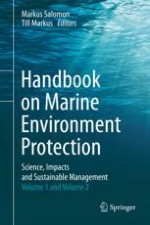2018 | OriginalPaper | Buchkapitel
53. Marine Geo-Engineering
verfasst von : Harald Ginzky
Erschienen in: Handbook on Marine Environment Protection
Aktivieren Sie unsere intelligente Suche, um passende Fachinhalte oder Patente zu finden.
Wählen Sie Textabschnitte aus um mit Künstlicher Intelligenz passenden Patente zu finden. powered by
Markieren Sie Textabschnitte, um KI-gestützt weitere passende Inhalte zu finden. powered by
